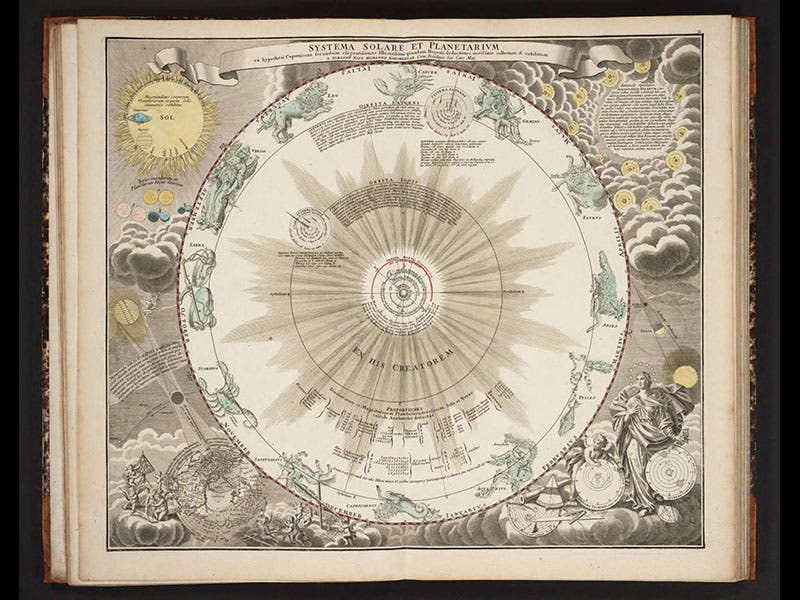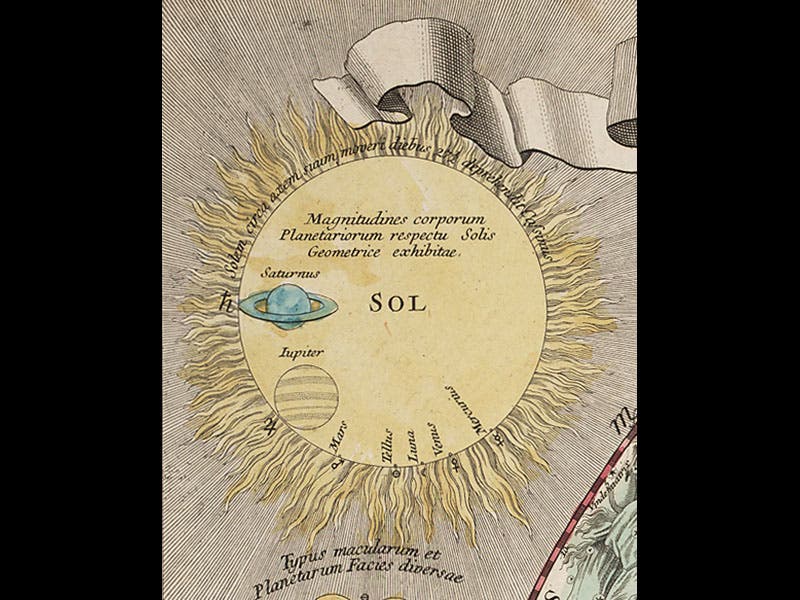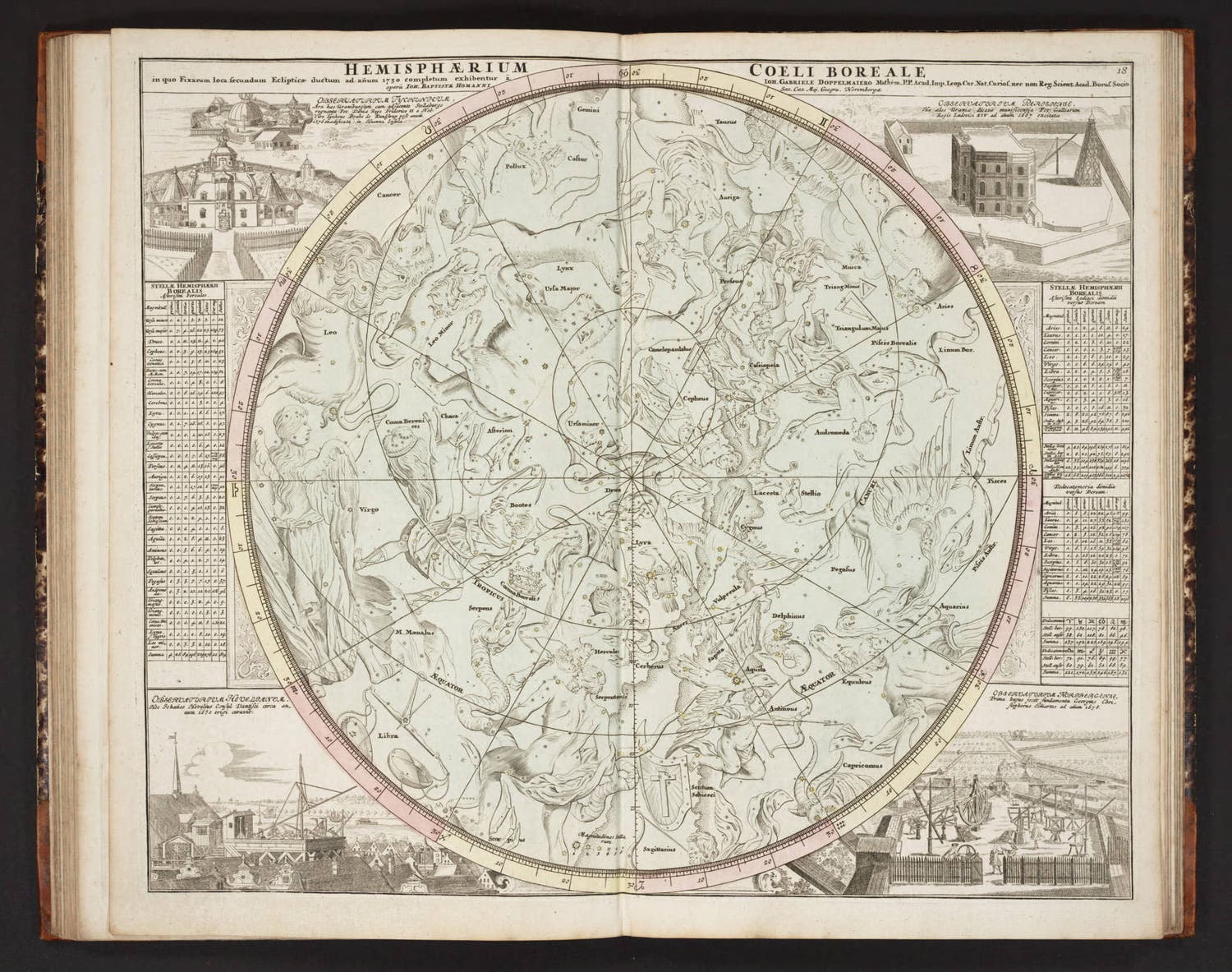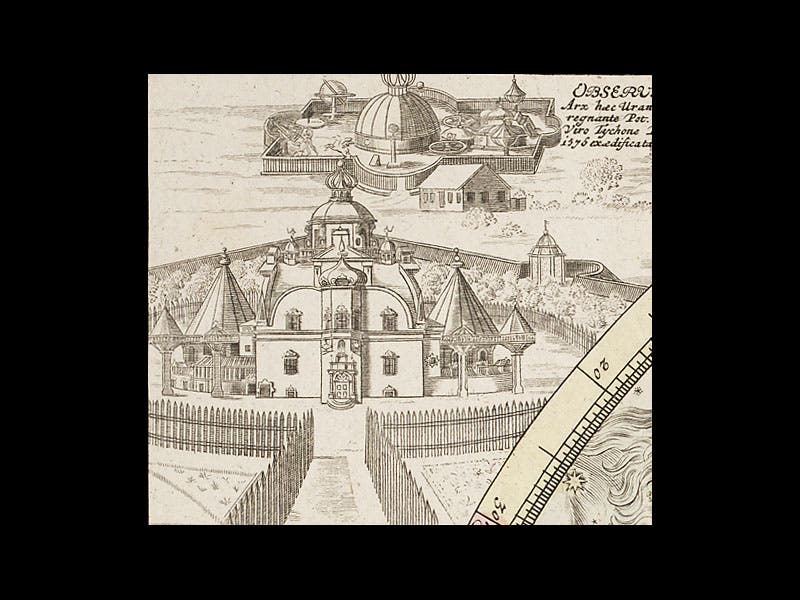Scientist of the Day - Johann Gabriel Doppelmayr
Johann Gabriel Doppelmayr, a German astronomer and mathematician, died Dec. 1, 1750, at age 73. In 1742, Doppelmayr published a collection of cosmological and astronomical charts that he called Atlas coelestis. The title was a little misleading, since the volume was much more than a celestial atlas, although it does indeed include ten star maps. The book is attractive not only because the plates are large and hand-colored, but because the engravings often include vignettes in the corners of considerable historical interest. For example, the plate that shows the planets of the solar system (second image above), contains, in the upper left corner, Christiaan Huygen's 1698 diagram of the size of the planets compared to the sun (third image). And the two celestial planispheres (the northern is shown as our fourth image), show, in their corners, 8 of the most important sixteenth- and seventeenth-century observatories, including that of Tycho Brahe at Uraniborg (fifth image). Even the engraved title page (first image) is rich with imagery, displaying the figures of Ptolemy, Copernicus, Kepler, and Tycho Brahe at the bottom, while above, the vortex-filled cosmos of Descartes has morphed into the gravitationally-bound universe of Isaac Newton (sixth image).
We have displayed the Atlas Coelestis three times (it is an irresistible chunk of eye-candy), first in our 1996 exhibition on celestial atlases, Out of This World, then in our 2010 exhibit on cosmology, Thinking Outside the Sphere, and, if you are in the area, you may see the book right now, opened to a plate on comets, in our current exhibit on the observation logs of David Levy.
Dr. William B. Ashworth, Jr., Consultant for the History of Science, Linda Hall Library and Associate Professor, Department of History, University of Missouri-Kansas City. Comments or corrections are welcome; please direct to ashworthw@umkc.edu.










![Using an astrolabe to measure the depth of a well, woodcut in Elucidatio fabricae vsusq[ue] astrolabii, by Johannes Stöffler, 1513 (Linda Hall Library)](https://assets-us-01.kc-usercontent.com:443/9dd25524-761a-000d-d79f-86a5086d4774/a998eb50-55d2-4a88-ace2-a50aa5fa86e7/Stoffler%201.jpg?w=210&h=210&auto=format&fit=crop)

